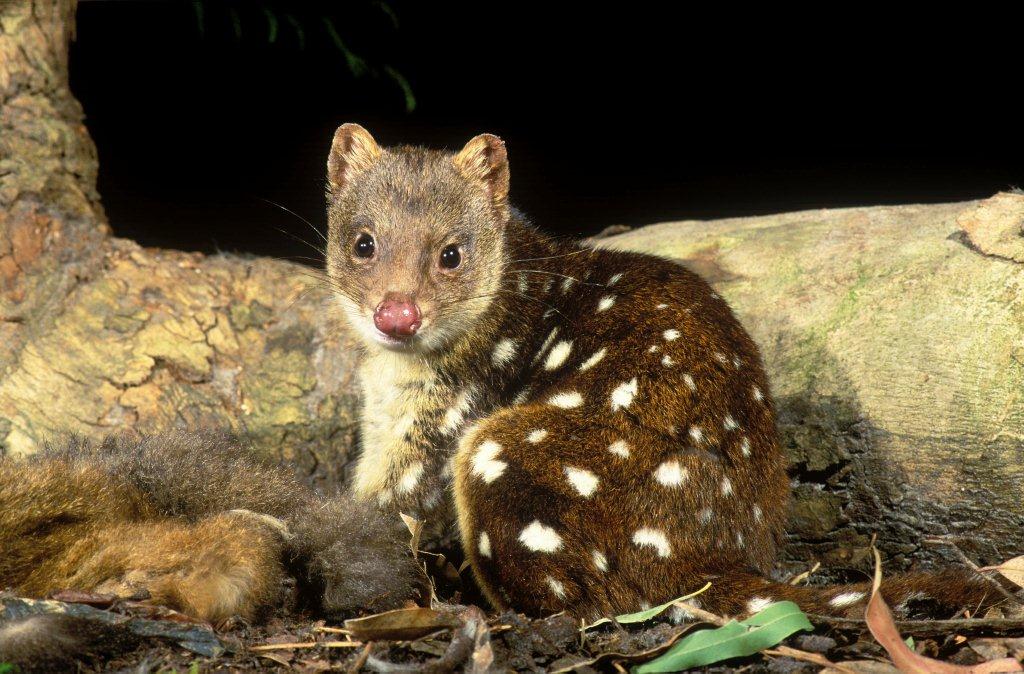Spotted-Tailed Quoll Project
Found in Victoria, Tasmania, and parts of New South Wales and Queensland, Spotted-tailed quolls vary from reddish brown to dark chocolate brown and have distinctive white spots on their body and tail. Shy and solitary with bright eyes, a moist pink nose and sharp teeth, these largely nocturnal creatures move around the forest floor on logs or in trees.
Females breed only once a year and baby quolls are left nestled in grass-lined burrows or hollow logs while their mothers go out to hunt or forage for food. Spotted-tailed quolls consume a variety of prey, including possums, rats, birds, rabbits and insects.
A major threat to Spotted-tailed quolls is the destruction of their native habitat through logging. A staggering 70% of Victoria’s native bushland has already been cleared, making it harder and harder for quolls to find safe places to live and raise their young. The introduction of predators such as foxes, and accidental poisoning as a result of wild dog baiting programs also put quolls at risk. In Tasmania, many quolls fall victim to deliberately laid poison baits designed to kill wildlife before they feed on post-logging regeneration seedlings.
Australia has some of the most magnificent and biodiverse forests in the world that help to mitigate the effects of climate change as well as maintain our water supplies. Yet many of these ancient forests, particularly in Tasmania, Victoria and New South Wales, are being clear-felled, burnt, and turned into woodchips for paper and cardboard.
In 2011, the Don’t Bag the Environment campaign supported The Wilderness Society in its fight to move logging out of native forests and into plantations. Protection of old-growth forests will help ensure the survival of the Spotted-tailed quoll and other unique and threatened wildlife.


